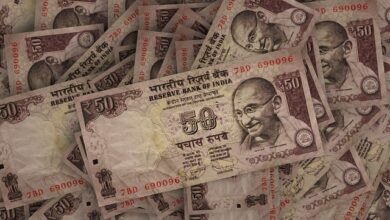Grocery Prices and Best Supermarkets for Budget Shopping in the Netherlands

The Netherlands offers a wide variety of grocery shopping options, catering to different budgets and preferences. While the cost of living in cities like Amsterdam and Rotterdam can be relatively high, there are plenty of ways to save money on groceries by shopping smartly and choosing budget-friendly supermarkets. In this article, we’ll explore average grocery prices in the Netherlands, tips for saving money, and the best supermarkets for affordable shopping.
1. Average Grocery Prices in the Netherlands
Grocery prices in the Netherlands vary depending on the region, store type, and product quality. Below are some approximate prices for common items (as of 2023):
A. Staples
- Bread (loaf): €1.50–€3.00
- Milk (1 liter): €1.00–€1.50
- Eggs (10-pack): €2.00–€3.50
- Rice (1 kg): €1.50–€3.00
B. Fresh Produce
- Apples (1 kg): €2.00–€3.50
- Tomatoes (1 kg): €2.50–€4.00
- Bananas (1 kg): €1.80–€2.50
- Potatoes (1 kg): €1.00–€2.00
C. Meat and Dairy
- Chicken breast (1 kg): €7.00–€12.00
- Ground beef (1 kg): €8.00–€14.00
- Cheese (Gouda, 500g): €4.00–€8.00
- Butter (250g): €1.50–€3.00
D. Beverages
- Bottle of water (1.5 liters): €0.50–€1.00
- Coca-Cola (1.5 liters): €1.50–€2.50
- Beer (bottle, domestic): €1.00–€2.00
E. Snacks
- Pack of cookies: €1.50–€3.00
- Chocolate bar (100g): €1.00–€2.50
Prices tend to be higher in urban areas compared to rural towns. Organic (biologisch ) products and specialty items such as imported goods or luxury brands are significantly more expensive.
2. Tips for Budget Grocery Shopping in the Netherlands
To make your grocery shopping more affordable, consider these practical tips:
A. Buy Local and Seasonal Produce
- Seasonal fruits and vegetables are often cheaper and fresher. Visit local markets for great deals.
- Farmers’ markets (markt ) typically offer lower prices than supermarkets for fresh produce.
B. Take Advantage of Discounts
- Look for discounted items marked with “Korting” or “Aanbieding” labels, especially near the end of the day when perishable goods are reduced.
- Many stores have loyalty programs offering discounts or cashback.
C. Shop at Discount Stores
- Opt for budget-friendly chains like Lidl , Aldi , and Action for everyday essentials.
- These stores often carry private-label products that are significantly cheaper than branded alternatives.
D. Avoid Pre-Packaged Items
- Buying loose fruits, vegetables, and bulk items is usually more cost-effective than pre-packaged versions.
- Bring reusable bags to avoid paying for plastic bags at checkout.
E. Cook at Home
- Eating out in the Netherlands can be expensive, so preparing meals at home using affordable ingredients is a smart way to save money.
- Classic Dutch dishes like stamppot or hutspot use inexpensive, seasonal ingredients.
F. Compare Prices
- Use apps like Picnic , Hollandse Markt , or Bonuskaarten.nl to compare prices across different stores and find the best deals.
3. Best Supermarkets for Budget Shopping
The Netherlands has a wide variety of supermarkets catering to different budgets. Here are the top options for budget-conscious shoppers:
A. Lidl
- Why Choose It?
- Known for rock-bottom prices on groceries, household items, and even clothing.
- Offers high-quality private-label products.
- Best For:
- Everyday staples like pasta, rice, canned goods, and frozen foods.
- Affordable wine and baked goods.
B. Aldi
- Why Choose It?
- Similar to Lidl, Aldi focuses on low-cost, no-frills shopping.
- Limited selection but excellent value for money.
- Best For:
- Bulk purchases and pantry essentials.
- Weekly specials on meat, fish, and seasonal produce.
C. Action
- Why Choose It?
- A discount store offering incredibly low prices on groceries, snacks, and household items.
- Perfect for stocking up on non-perishables and toiletries.
- Best For:
- Bargain hunting and impulse buys.
- Affordable snacks, drinks, and basic kitchen supplies.
D. Jumbo
- Why Choose It?
- Mid-range supermarket with competitive prices and frequent promotions.
- Often found in smaller towns and suburban areas.
- Best For:
- Fresh meat, fish, and regional specialties.
- Family-sized packs at reasonable prices.
E. Albert Heijn
- Why Choose It?
- The largest supermarket chain in the Netherlands, offering a mix of affordable prices and convenience.
- Ideal for quick shopping trips in city centers.
- Best For:
- Ready-to-eat meals and snacks.
- Household items and toiletries.
F. Dirk
- Why Choose It?
- A smaller chain known for its focus on sustainability and organic products at reasonable prices.
- Offers a good selection of vegetarian and vegan options.
- Best For:
- Eco-friendly shoppers looking for affordable organic choices.
4. Alternative Shopping Options
If you’re looking beyond traditional supermarkets, here are some alternative ways to save on groceries:
A. Local Markets
- Farmers’ markets (markt ) are abundant in the Netherlands and offer fresh, locally sourced produce at competitive prices.
- Visit towards the end of the market day for bargains as vendors reduce prices to clear stock.
B. Hypermarkets
- Large hypermarkets like Albert Heijn XL and Jumbo Mega provide significant savings on bulk purchases.
- Perfect for stocking up on non-perishable items, cleaning supplies, and pet food.
C. Online Grocery Delivery
- Platforms like Picnic , Albert Heijn Online , and Jumbo.com allow you to shop online and have your order delivered.
- Check for promotional codes and free delivery thresholds.
D. Food Banks and Solidarity Initiatives
- Some cities have solidarity grocery stores (voedselbanken ) that offer heavily discounted groceries to low-income families. These require proof of eligibility.
5. Regional Variations in Grocery Prices
Grocery prices can vary significantly across the Netherlands:
- Amsterdam and Major Cities: Higher prices due to demand and real estate costs.
- Rural Areas: Lower prices, especially for locally produced goods.
- Southern Netherlands: Slightly higher prices for imported goods but affordable local produce.


